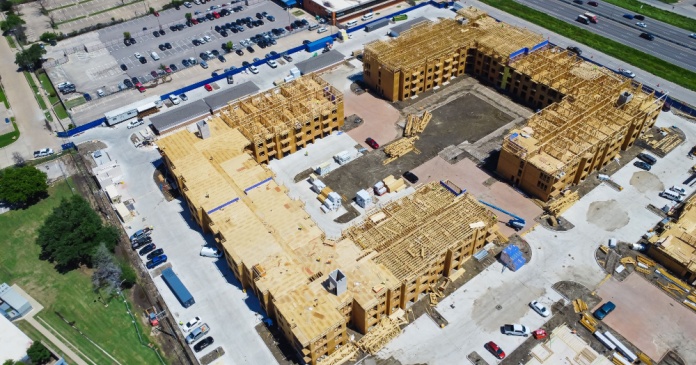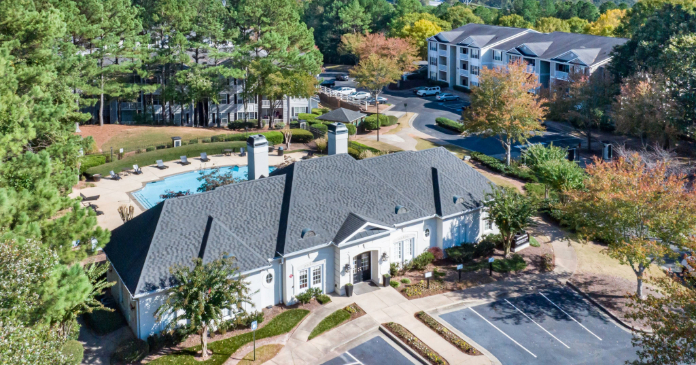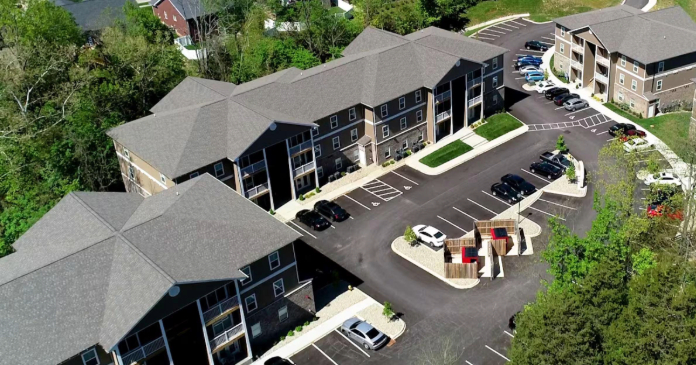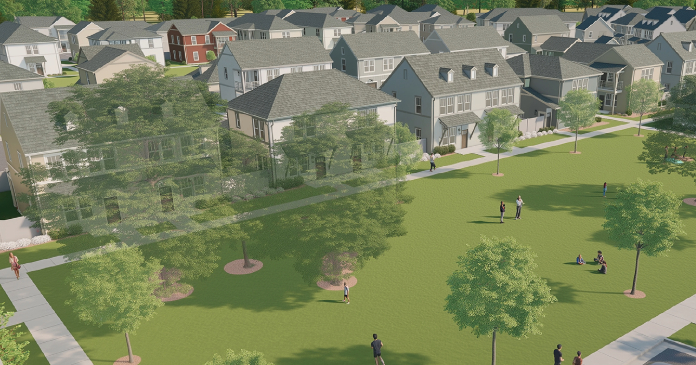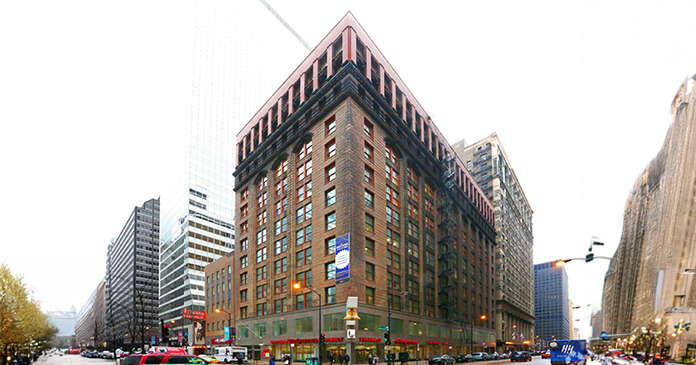Poor people who live in government housing projects tend to find their broader neighborhoods are poor, too. Many of their neighborhoods are segregated. Their schools tend to under-perform.
And every bit of this is known, even to the government. But this being the information age, the federal government says it wants to gather information—scads of data that are disparately available—to start fixing the problem.
A rule proposed by U.S. Department of Housing and Urban Development, or HUD, calls for gathering all manner of social, economic, demographic and education data and mapping it to examine patterns of housing and segregation. This could readily pinpoint what is anecdotally known—that there are racially and ethnically concentrated areas of poverty, overcrowding and substandard housing. The data would not only demonstrate this beyond doubt but also show where racially and financially segregated families are ill-served by problem schools and poor access to jobs or transportation.
HUD says it then could use the data when deciding how and where to spend money for housing developments or to support cities’ requests for community development block grants.
“Today, it’s about more than just addressing outright discrimination and access to the housing itself,” HUD Secretary Shaun Donovan told the NAACP in a July speech. “It’s also about giving every community access to important neighborhood amenities that can make a tremendous difference in a person’s life outcome.
“I’m talking about good schools, safe streets, jobs, grocery stores, health care and a host of other important factors,” the HUD secretary said.
But this is where skepticism has come in. The proposed rule is open for public comment (over 800 are on HUD’s public docket at press time). The overwhelming majority of them are negative, showing a distrust of HUD’s intentions.
“The program, as described, is nothing more than a grand (and expensive) social engineering experiment the result of which will be to increase crime, poverty, declining home values and educational decline in formerly safe neighborhoods,” said a commenter from Ohio. “Programs already exist to help families afford housing. The new program would artificially inject stable neighborhoods in middle class areas with low-income people from statistically higher crime areas and lifestyles.”
Wrote someone named Dave Turnball, whose home state was not provided: “This proposal has got to be one of the most dangerous overreaches of American government power I have ever seen. It is racist, foolish, and insulting to the core.”
“Stop this nonsense!” wrote a commenter named David Barlow.
A Fox News report put it this way: “Uncle Sam wants to help you diversify your neighborhood, whether you like it or not.” It called HUD’s proposed data collection a “discrimination database.”
HUD maintains that the critics misunderstand what it wants, although its answers are unlikely to persuade those with doubts.
Asked if this is social engineering, Bryan Greene, acting assistant secretary for fair housing and equal opportunity, chuckled and said, “It’s not intended to do that.”
He said the rule proposal stems from the 1968 Fair Housing Act, which called on HUD to “affirmatively further fair housing.” That has always been a goal, but this rule would provide “clear guidance and technical assistance” to help communities “understand what it means to affirmatively further fair housing in the 21st Century.”
The Fair Housing Act, he said, “creates an obligation not only to avoid discrimination but to take proactive steps to ensure that people have equal housing opportunity in their community. And so if you are in a city and you have historically addressed housing discrimination by enforcing the fair housing laws, you may still find in some communities patterns of segregation persist.”
And so communities, he said, can take “proactive steps to identify what causes those housing patterns today. And also look at what has promoted integration historically, too. If you are a recipient of federal financial assistance, you have an obligation, just as the secretary of HUD does, to affirmatively further fair housing, so you need to take proactive steps to identify whether there are any barriers to housing opportunities in your community.”
Under the proposed rule, communities would examine poverty, segregation, integration, housing costs, overcrowding, and neighborhood assets such as schools, community centers and employment.
How might a HUD grantee use that information?
“If you were looking at, for example, segregation and integration, you would try to determine what factors or what determinants today may cause those trends, and identify if there is anything that as a community you could do to address those, then,” Greene said.
A number of these data sets are available already.
Rich Exner, the data analysis editor for cleveland.com, took a look at the location of public housing developments owned and run by the Cuyahoga Metropolitan Housing Authority, for example. What he found is not surprising: Many people in public housing live in areas with high segregation, high poverty, high unemployment and poorly-achieving schools.
So what is HUD’s goal with its own data dive?
Greene answered by saying “that’s why the analysis is key.”
“If those are the facts, you’re to look at why they are. And so, for example, look at the reverse of those characteristics. Are there communities in your metro area with these positive neighborhood aspects? What are the demographics of those communities? And are there barriers to entry for different populations to live in those communities?”
But Greene stressed that the “rule in no way is intended to abandon these communities that are currently communities of concentrated poverty. You also need to look at what’s going on in those communities and what can you do to stimulate those communities so they are places of greater community assets and opportunities for people.
“So you should be looking at both types of communities and figure out what may be causing the patterns you currently see.”
This could mean, Greene said, that “you may need a greater balance of public investment so you aren’t perpetuating existing patterns, but that you are creating more housing opportunity throughout your metropolitan area.
“You have to look at what are currently the barriers to true fair housing choice” in a given market, he said. “It could be the costs of housing in a community, it could be zoning, it could be a wide variety of legitimate or sometimes illegitimate practices.”
Another HUD official said that this information could be used by local governments and housing agencies when they apply for capital funds and community development block grants. The data could support their applications. It also could show where they need to refocus.
So, for example, if Cleveland or CHMA wanted to build 100 housing units, the data might clearly show segregation patterns that could be problematic. But if the plans also called for new businesses, transit access, a school or social services center–“kind of a complete reinvestment in the area to increase the assets in that neighborhood–that would be something that would potentially work,” a HUD official said.
HUD maintains that nothing in this rule means it is changing its goals. It says it just wants to assure that more and clearer data guide local decision-making that involves HUD money.
If the data show segregation and a neighborhood’s economic shortcomings, will this force a housing agency to push new tenants to the suburbs and away from the segregation?
“Well, you certainly have to examine why it currently exists,” Greene said. “But if that analysis shows that we’re dealing with racial segregation, concentrated poverty and very limited assets in those communities, the Fair Housing Act does say you can’t receive HUD money and continue to concentrate poverty. So part of the quality of planning should look at what they can do to address the existing segregation and help de-concentrate the existing poverty, which would include looking at how you revitalize some of those communities where you may currently operate.
“You don’t need to move the entire public housing infrastructure into white suburban communities,” Greene said. “But you should recognize that there may have been a history of segregation, a history of investment that has perpetuated segregation, and examine how you can bring more assets to those communities as well as what you can do to promote a greater distribution of your public housing investment.”
Asked if this is at least partly a recognition that public housing policy has helped create racial and economic segregation, Greene said, “Oh, yes. It’s not lost at all. And that is why, at least in 1968, the Fair Housing Act called on the secretary to affirmatively further fair housing, because that provision of the law was a recognition that the federal government created and perpetuated the ghettos to that point. And while this obligation has existed in the law for some time and people had requirements to promote fair housing for many years, there’s been a lack of clarity in terms of what was required of the community.”
Comments on HUD’s proposed rule are open until Sept. 17.
“Our aim is to review the comments and provide a final rule sometime next year,” Greene said. But this will be an ongoing process, with results unlikely to be noticed for a couple years. One reason for the lag is that local communities must use the data in writing their consolidated plans–the blueprints they use to guide their housing and community development programs–and those are only updated every three to five years.
Howard Husock, VP for policy research at the New York-based Manhattan Institute, also affiliated with Harvard University, is a self-described “lapsed liberal” who writes a blog for Forbes on “philanthropy, civil society and the welfare state.”
He is skeptical, and drew a parallel to HUD’s agreement with West Chester County, N.Y., that settled a long-running discrimination complaint.
The two sides continued to wrangle, however, over whether the county took enough additional steps to prevent housing discrimination. HUD recently announced it would reallocate $7.4 million in grants to West Chester County to other areas because it said the county chose “to disregard its civil rights and federal grantee obligations depriving its citizens of funding for infrastructure improvements, programs for the youth and senior citizens.”
“It reminds me a lot of that,” Husock said, “in which we’re seeing a link between community development funds and efforts to ensure a distribution of minority households throughout the jurisdictions that are receiving the HUD community development funds.
“The traditional notion of fair housing—that anybody who has the ability to pay should not be denied—is being complemented, if you will, by a notion that there ought to be a result of greater dispersion of minority families, and that jurisdictions that accept community development funds should be held responsible for that.”
Told that HUD maintains it will use the data to also improve existing communities and not merely send low-income renters out to the suburbs, Husock said, “Historically there is some tension in that.” The debate has been over whether to use community development funds to improve conditions in poor neighborhoods, or to use the money to disperse poor families because that could improve their conditions.
What’s the answer, then, if it is recognized—as HUD seems to—that many poor people living in public housing are in problem-riddled neighborhoods?
“Some are and some aren’t,” Husock said. “I think it’s important, as we are in the 50th anniversary on the March on Washington, not to be stuck in time, as if those conditions continue to pertain to everybody. There’s been a tremendous suburbanization of minority households,” he says.
“There has been upward mobility for black people in the United States. That’s happened. I think there’s a good case to be made where the important thing is to not look at the locale, but how do you help people improve their own lot in life? I think it is absolutely right to enforce fair housing laws aggressively, so that everybody who has the ability should not be turned away. That’s the worst thing.”
Asked about public comments that say HUD’s proposal amounts to “social engineering,” Husock said, “That’s a loaded phrase. I’ll stay away from that.”
But he said, “I was involved in the civil rights movement as a young person, and the progress of black people in America is really an important matter for the United States. It still is. I happen to take the view if that we make artificial efforts to move people into neighborhoods where they’re judged to be under-represented, that is probably the least effective way to ameliorate racial tensions. I think the odds of people getting along when they share socioeconomic status is just much higher. There used to be a time when there were ethnic neighborhoods where people didn’t want other ethnicities. And that got broken down because people with similar education and social aspirations moved in.
“So the key, I think, is to make sure that if people have the money, they can move in. Then you are going to hold socioeconomic status constant and increase the chance that people are going, to put it bluntly, to get along.”
As for HUD’s stated focus of also putting more tax money into neighborhoods in hopes of improving them with features that reach beyond housing, Husock said he thought it was misguided. He recalled the Empowerment Zones of the Clinton administration and their predecessors, Enterprise Zones.
“The fact of the matter is that neighborhoods reflect income,” he said. “If there’s not enough wealth in a neighborhood, fixing up the sidewalks and improving the infrastructure is really not going to change the character of that neighborhood.
“At the same time we’ve seen neighborhoods in many cities,” including Cleveland’s Ohio City, “that do rejuvenate themselves. Because they are rediscovered by people who are willing to fix them up.”
All over New York, Husock said, immigrants have moved into neighborhoods thought to be hopeless.
“It’s a question of the effort and income of those who live in a place,” he said. “The idea that somehow physically improving the neighborhood through public investment will make it a good neighborhood, I think has been disproven. What makes good neighborhoods are people who work hard together to improve their neighborhood—even if it starts off poor and shabby.”
We called the National Community Development Association, which represents local governments that receive block grant money, to get its view on the HUD rule. Cardell Cooper, the executive director, was an assistant HUD secretary for community planning and development in the Clinton administration.
But Cooper said his members are still reviewing the rule and have not yet submitted a public comment. He said he wanted to wait until it gives its opinion to HUD before commenting in the media.
Author: Stephen Koff, Plain Dealer




